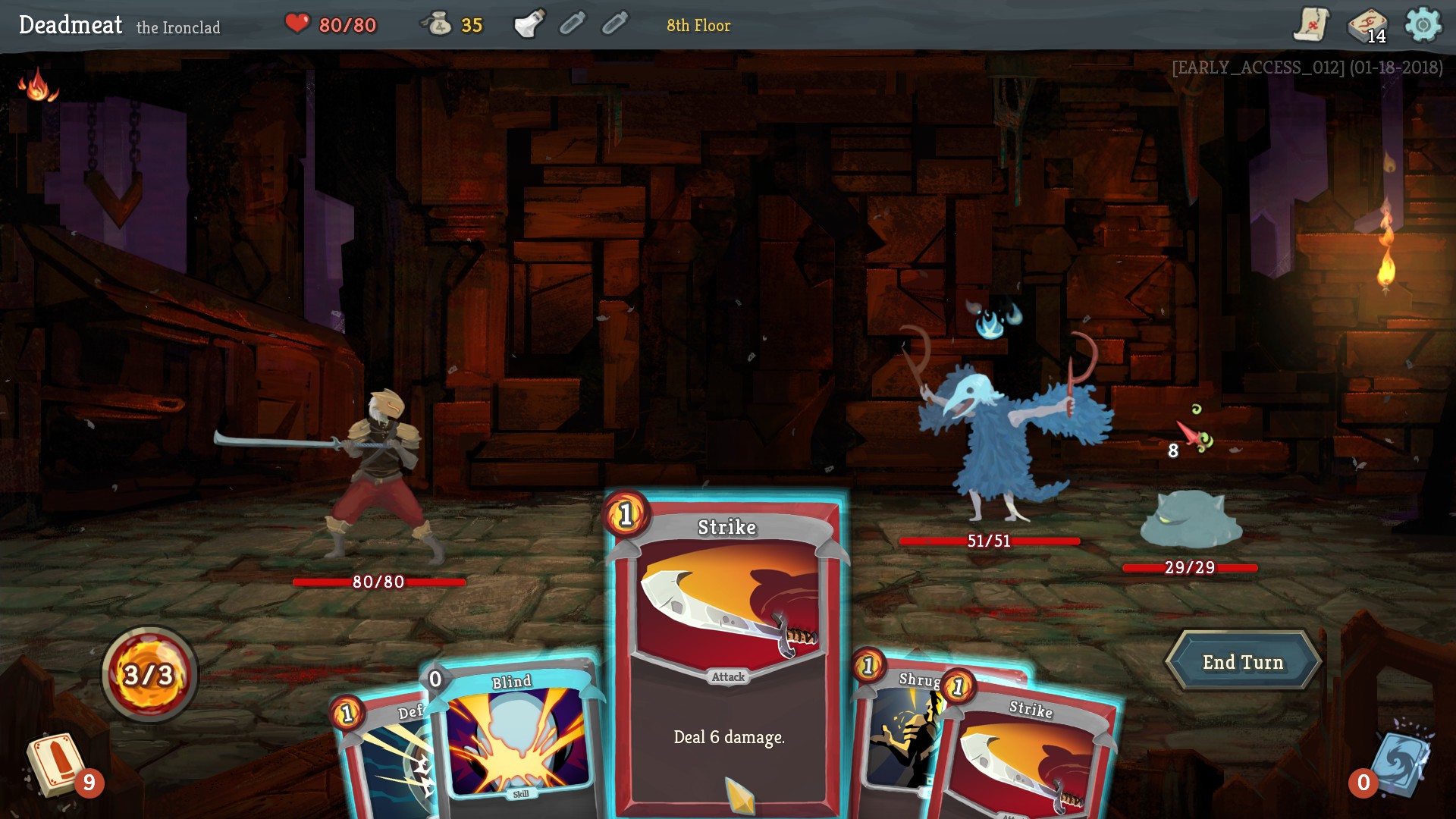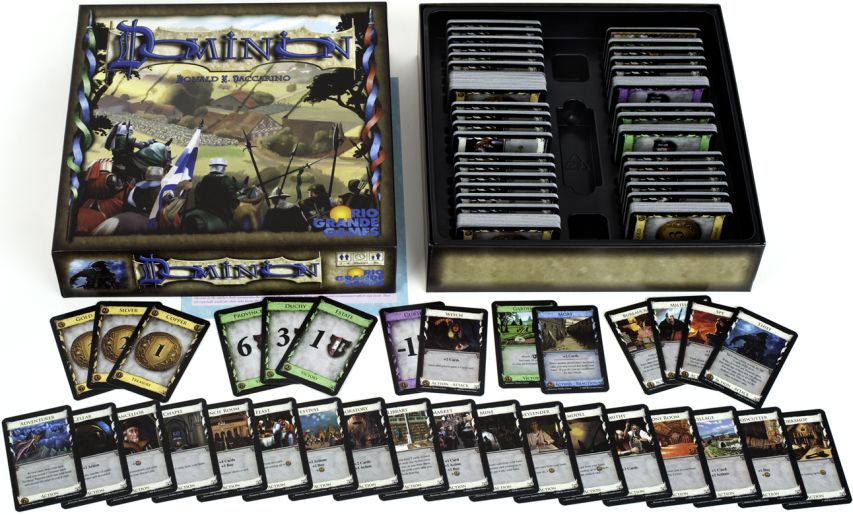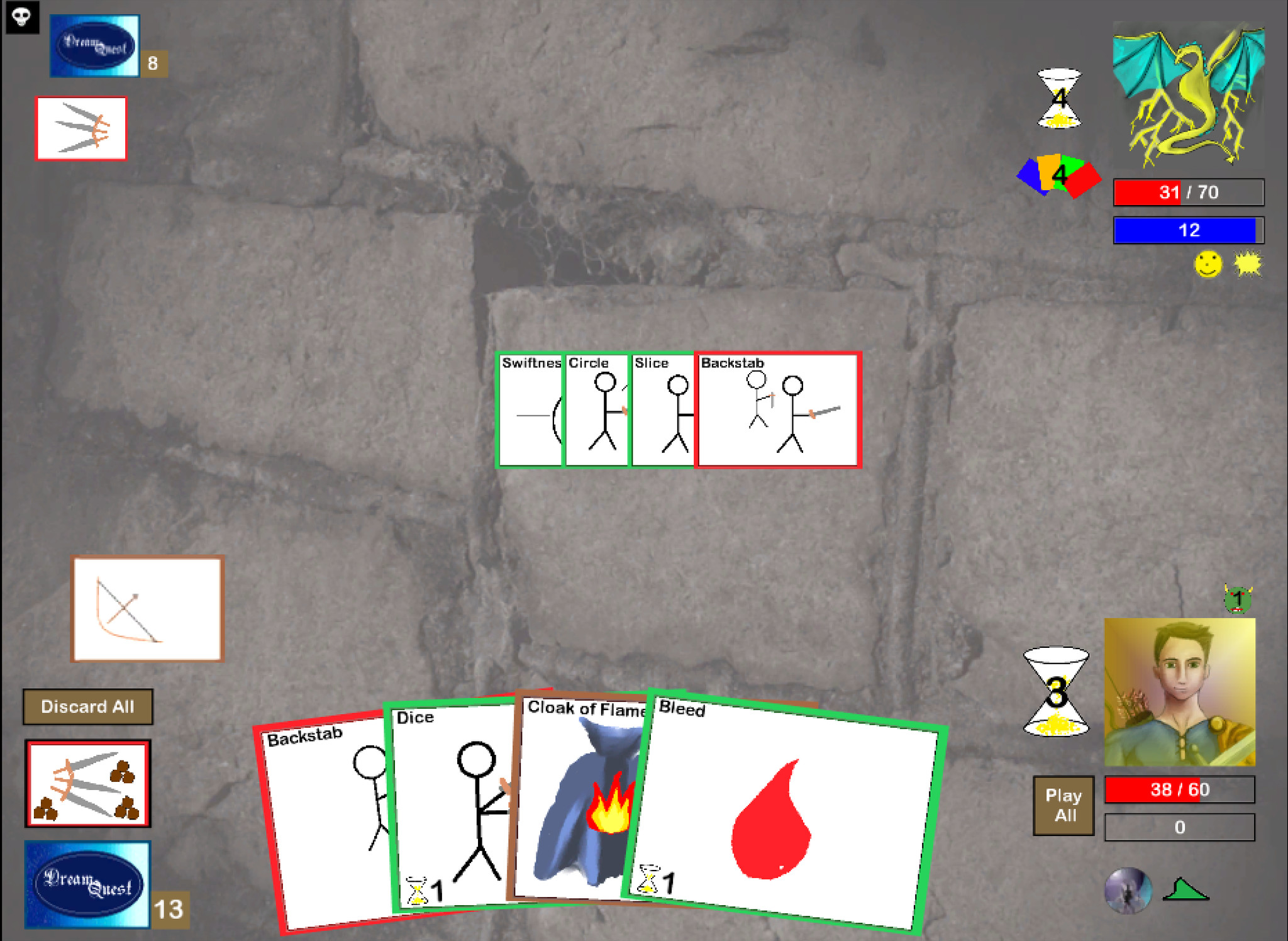The Gollop Chamber: Rise of the roguelike deck builder
From the tabletop to videogames like Slay the Spire and Dream Quest, a new subgenre has emerged.


Julian Gollop has been in the games industry for more than 30 years. You probably know him best as the designer of games like Chaos and X-COM: UFO Defense. His column, the Gollop Chamber, will touch on games history, design, and, probably, a lot of XCOM.
I am often fascinated by game design evolution and how different genres and mechanics get fused in interesting ways. Much of the innovation here has taken place in board games, but there are also interesting evolutionary influences on videogames, where a videogame takes a board game idea and makes it something only possible in this medium. So today I would like to introduce you to a new videogame sub-genre—the roguelike deck builder. Now there aren't many entries in this genre, but I am sure this will change.
First, to explain deck building games. When you hear "deck building" the first thing you might think of is Magic: The Gathering or Hearthstone, but these are games for which you build decks, not "deck building games". In deck building games the game revolves around building the deck as part of the gameplay. The first deck builder I played was Dominion, a card/board game released back in 2008. In Dominion, each player starts with a deck of 10 cards containing money cards and victory point cards. Each turn a player draws five cards from that deck and may buy a card using money cards from their hand, and play a card. Then the hand is discarded, so that a new hand of five cards may be drawn on the next turn. When a player doesn't have enough cards to draw from they shuffle all discarded cards, including any cards bought in preceding rounds, in order to create a fresh draw deck. The cards you buy include money cards and victory point cards of various values, and kingdom cards which can be played for various effects which are described on the card.

Popular tabletop deck builder, Dominion.
All deck building games start off simple with few choices for the player to chew on. Complexity builds up as the game progresses and the player has to devise strategies for cards to include in the deck, and cards to get rid of. Sometimes deck choices you make earlier in the game can come back to bite you. Sometimes bad cards are added to your deck, and you generally have limited ways to remove them.
There are relatively few videogame deck builders, and most of them are iOS/Android adaptations of original board games. One of the more successful is Ascension: Deckbuilding Game, which is available on Steam. It's a fairly straightforward implementation of the original card game, but didn't set the videogame world alight.
Innovative and intriguing use of deck building mechanics for videogames first appeared with Peter Whalen's Dream Quest (originally an iOS app, but now available on Steam). You have to disregard the very basic graphics, but otherwise it is a compelling blend of roguelike mechanics with deck building. The roguish aspects are fairly simplified, since the monsters don't move, but the exploration and random generation are there. The deck building is critical, because it gets difficult to mold your deck to deal with increasingly varied enemies.

People aren't kidding about Dream Quest's graphics.
The biggest gaming news, reviews and hardware deals
Keep up to date with the most important stories and the best deals, as picked by the PC Gamer team.
Dream Quest caught the attention of none other than Richard Garfield, designer of Magic: The Gathering. "It has been ages since I couldn't put down a game" he comments in a Facebook post. "I became completely hooked when I realized that you really had to build a well rounded deck. Most deck building games reward you for picking a strategy and following it to the absolute exclusion of anything else. This is one reason I am a second tier deck builder — I usually want to add a bit of variance to my deck. In my quest to win Dream Quest I narrowed my strategy as I typically have to do and found I always eventually ran into something that just demolished me. I didn't actually win until I started adding back in some of the cards that gave my deck a bit more dimension."
This is high praise indeed from the granddaddy of collectible card games. Despite this endorsement, Dream Quest has languished in obscurity. Now there is a new contender on the block.

Slay the Spire in action.
Slay the Spire is in Steam Early Access, and is doing well. It streamlines the roguelike aspects even further, with exploration being limited to a branching path containing monsters, special encounters, and rest stops. You progress steadily towards the final level boss using a combat system which is asymmetric. You will normally be able to play multiple cards in a combat round, including various attacks, blocks and special effects. However, the monsters will usually perform one action each per turn, and this action is shown to you in advance of the monster's turn. This gives you a chance to plan and react accordingly. It's a clever mechanic, because it allows you to make interesting decisions based on a known situation.
So far I have enjoyed my time with Slay the Spire and I look forward to its emergence from Early Access. I'm sure there will be more videogames that use deck building mechanics in interesting ways, but in the meanwhile, both Slay the Spire and Dream Quest will give you your money's worth.

